


As E3 approaches and our anticipation for Fallout 4 only grows (and boy, have we been waitin'), like many other Fallout fans we've been dusting off the old games and giving them another spin to soothe the cravings until the big announcement day. While we were at it we dug up a ton of tiny little tidbits you may or may not have ever known about the series.
From the original on up through New Vegas, take a trip with us through the Wastes to see what never was and what could have been. Part 2 can be read here!
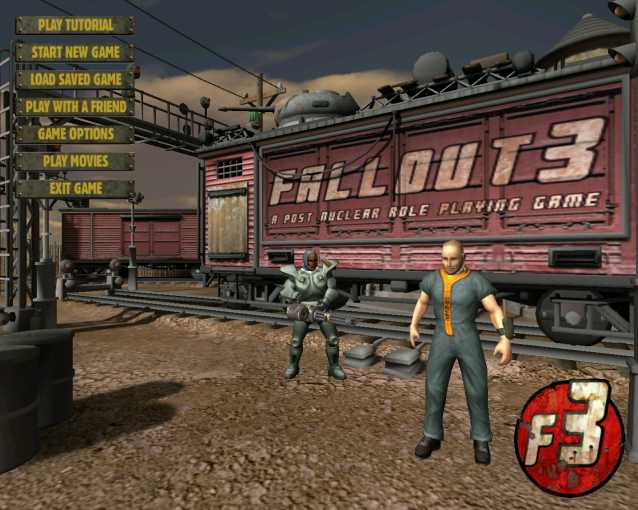
1. A lot of stuff from Black Isle’s cancelled Fallout 3 project, referred to as Van Buren, was later used for Fallout 3 or Fallout: New Vegas, from characters and settings to entire storylines and factions.
The Powder Gangers, Big MT, Little Lamplight (originally Vault 29), Jean Baptiste Cutting, Caesar, Hoover Dam, Alice McLafferty of Crimson Caravan, Arcade Gannon, Vault 22 (the Nursery), Joshua Graham, Trogs, the Twisted Hairs tribe, the NCR vs Brotherhood of Steel conflict...the Van Buren project was “95% complete” when the plug was pulled and although we’ll never get to see that game, its legacy lives on.
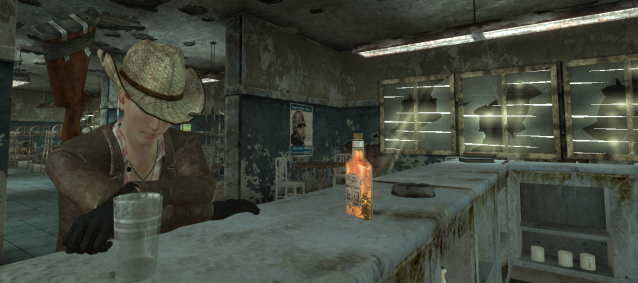
2. In Fallout: New Vegas, the series sees a return to the West Coast, and this allowed the writers to follow up on characters from the first two games. Cass, for instance, an alcoholic young woman you find stationed up in Mojave Outpost, is actually the daughter of the companion of Fallout 2’s Chosen One, John Cassidy.
As you may remember, he was a bit disparaging towards Tribals, expressing embarrassment at his talent for throwing spears, as it made him seem of Tribal origin. However later, he apparently fathered a daughter with a Tribal. As a nod to her father, Cass will profess her combat strengths to be explosives and unarmed combat but her hidden stats instead reveal strong melee skills. And despite her claim that her mother didn’t teach her to throw spears, she’s actually quite good at it--a distinctly Tribal trait.
Additionally, if you travel with Cass as a companion, the Nightkin in Black Rock cave will remark “the voices knew flower girl’s father”.
Another example is Arcade Gannon, a doctor with the Followers of the Apocalypse, who is the son of an Enclave officer and was born on the oil rig in Navarro four years after its destruction.
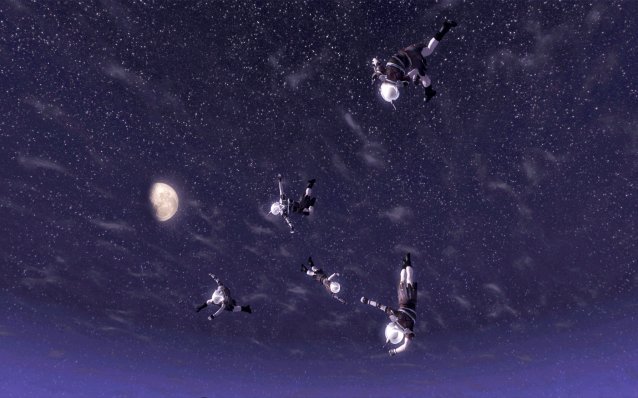
3. In a cut Wild Wasteland ending for the Fallout: New Vegas DLC Old World Blues, the scientific research facility Big MT wreaked havoc on the Mojave following the adventures of the Courier. “Floating spheres” scatter across the desert, and several communities are destroyed or meet with a strange fate, from vegetation-based STDs in The Gomorrah to “giant man-eating battle Brahmin” pouring out of Black Mountain.
All the details are bizarre but perhaps the most so is the alleged fate of the NCR, who are said to be brainwashed...in Tranquility Lane, the deranged simulator in Vault 112 from Fallout 3. Worse, it’s described as “nation-wide”. Oh the thought of the forces of Big MT and Vault 112 combining...the horror gives me chills.
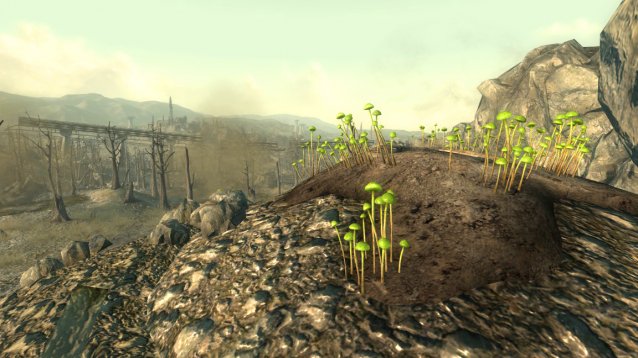
4. In Fallout 3 there is a little-known unmarked quest where you can steer the evolutionary course of two warring factions of ants. Head to Shalebridge north of Vault 87 and root around the fungus to find the nest and start the quest.

5. Like Novac of Fallout: New Vegas and The Pitt, Arefu of Fallout 3 gets its name from a nearby sign that has fallen into disrepair, in this case the letters “C” and “L” obscured from the word “CAREFUL”. Coincidentally, Arefu is also the name of a Romanian village known for its proximity to the castle of Vlad III, the inspiration for Dracula. Meanwhile Arefu is plagued by constant attacks from local vampires, who you can find in Meresti Metro Station, another location named for a commune in Romania.

6. Well, here’s another reason to clear out the Raiders in Evergreen Mills: child sex slaves. In the Bazaar, you’ll find stripper poles surrounded by teddy bars and blocks and slave pens filled with toys. Ew.
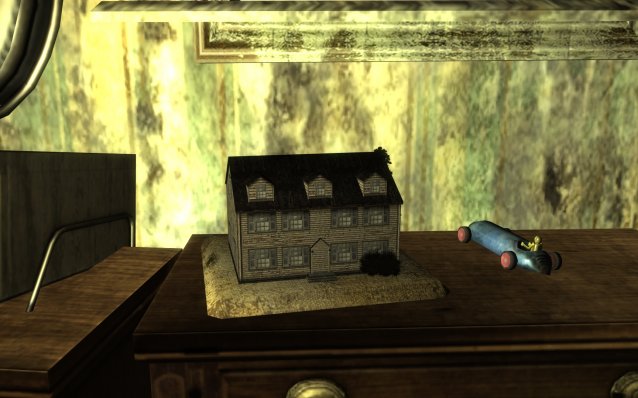
7. In Fallout 3, there is a strange, small model of a home inside Gibson’s House in Minefield. It is locked, but can be picked with 100 Lockpick skill. Inside is some money, junk food, and Buffout. The key for it can be found on a man named Gibson in Capitol Post, who has been beheaded in the most gruesome of fashions. This is a reference to the game Snatcher, which features a minor character named Jean Jack Gibson who was killed in a similar manner, with a note on his person reading “Search the house!”. The Gibson home in Snatcher is occupied by his daughter and contains a similar model home.

8. In Fallout: New Vegas, a good number of the quests have names that are taken from popular cowboy and Western themed entertainment from the 40s and 50s, mostly from songs and movies. Fallout 3 however has a few references too. Big Town is named for the song of the same name by Roy Brown, who has two songs on the Fallout 3 soundtrack: Butcher Pete and Mighty Mighty Man. Dukov’s Place similarly is a reference to the song Duke’s Place, a jazz composition written by Duke Ellington in 1942 and later re-recorded with lyrics in the mid 40s.
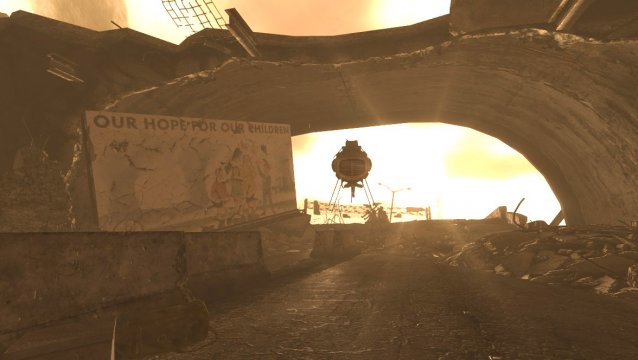
9. The settlement of Hopeville, a location in the Lonesome Road DLC for Fallout: New Vegas, was likely an Enclave-affiliated town. While it is never stated directly, there is plenty of evidence throughout the campaign. For one, its over-the-top patriotism, embraced by primary antagonist Ulysses, sits right in line with the political agenda of the Enclave. Hopeville also is one of the game’s few abundant resources of Energy weapons, which are typically the weapon class of choice for the Enclave. Additionally, ED-E’s hidden programming reveals evidence of Enclave activity in Chicago and he winds up in Hopeville on his way to Navarro, the major Enclave settlement from Fallout 2. And, given that the Enclave is the shadowy remnant of the former U.S. government and Hopeville was at one point essentially sold to the mad scientists of the government-funded Big MT for weapons and weather experiments, it kind of makes sense.
Now, some say that I’m wrong and that Hopeville was occupied by NCR. I don’t agree. The NCR sent the Courier to Hopeville specifically to detonate the missiles lying underneath the ground. Why would they do that to their own? They wouldn’t. But they would do it to their greatest enemy at the time--the Enclave.
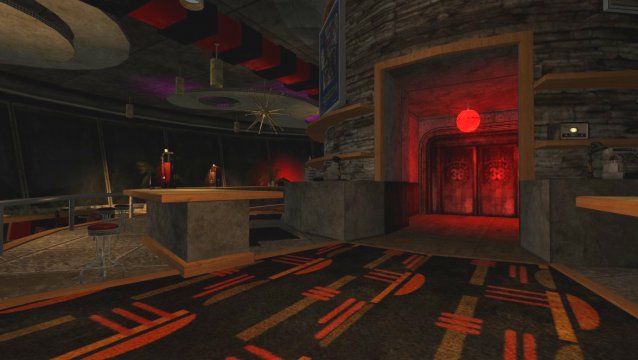
10. In Fallout: New Vegas players often find bottles of something called the Atomic Cocktail lying around. Although never served in a bottle, the Atomic Cocktail is actually a real cocktail, and its existence in the game shows just how much research went into it. The original drink was created and served at a Las Vegas restaurant that had a view of a nearby nuclear testing strip, hence the name of the drink and its inclusion in New Vegas, particularly the Sierra Madre.
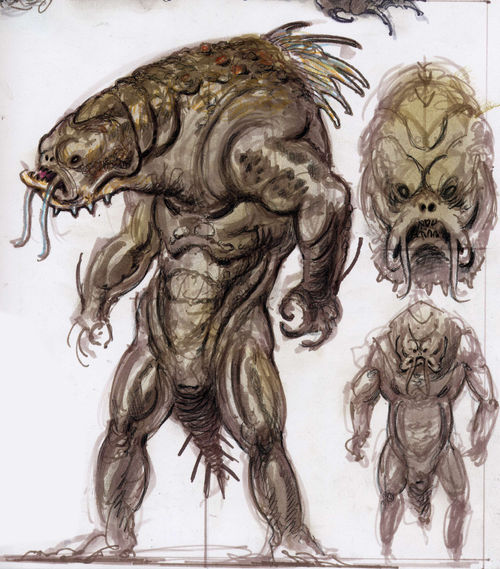
11. At one point there may have been plans in Fallout 3 for an intelligent version of the Centaur. Not only does some of the concept art seem to suggest so, but an unused asset attached to the Wasteland Survival Guide quest is Centaur named Clancy. Additionally, Moira says in the entries on her computer terminal that the abundance of tongues on a Centaur suggests that they are capable of speech. This may have been a joke or...maybe the Lone Wanderer was meant to test that theory for her once upon a time!
Another common enemy in the Wasteland may have had a variation that was cut sometime during the development process, the Mirelurk. The Art of Fallout 3 suggests a Catfish species may have once been planned. And a rather unusual idea that got nixed during Fallout: New Vegas was Radioactive Tumbleweed, which would have caused active damage and radiation damage.
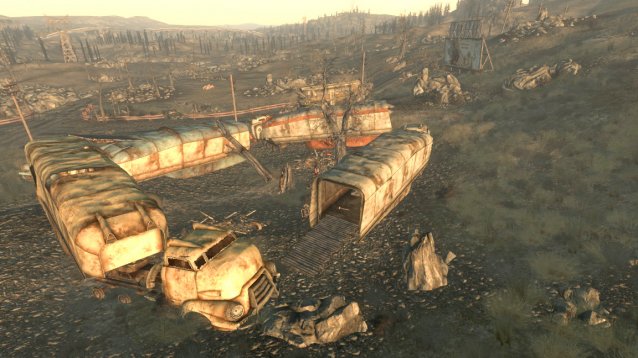
12. Ever go through the Five Axles Truck Stop in Fallout 3 and come across the lone C.B. radio holodisk recording and wonder if there was more to that story? There was. While the sole remaining disk consists only of a man asking, “Any truckers on this wave?”, the follow-up disks, which were cut from the game, reveal that another trucker responded, made note of the nuclear clouds on the horizon, then suggested they “circle the wagons” and meet nearby on Route Seven. This would explain both the name of the location and the configuration of trucks there.
Another location in Fallout 3 that gave insight into the events immediately surrounding the bombs was also altered to be less revealing: Hamilton’s Hideaway. Cut terminal entries from the scene tell the brief story of a family surviving in a homemade shelter after the bombs fell. It would seem that at some point in development, anything related to descriptions of the direct aftermath of the bombs was cut. I have some theories about why they might have done this; I suspect Fallout 3 was originally meant as a prequel taking place right after the bombs were dropped, which would explain many mysteries of the Wastes (Brailee Ewer’s delusion that she is still in Pre-War America, for instance, would make a lot more sense). But that is an article for another time.
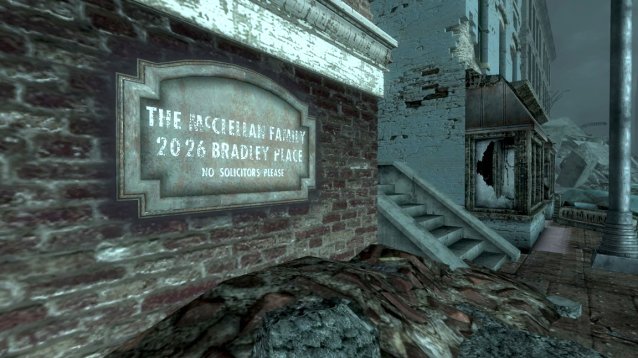
13. In the ruins of Georgetown, Washington D.C. you may have come across the residence of the McClellan’s, who unlike any other family in the area actually have a sign bearing the address of their home: 2026 Bradley Place, which is also occupied by their dog Muffy and a Mister Handy unit. This is a reference to the short story There Will Come Soft Rains by Ray Bradbury, which is about a robotic house that continues to operate unaware that its owner was killed in a nuclear war.
The unit can be instructed via computer terminal to walk the dog, at which point the unit will exit the house, find Muffy dead outside in the backyard, and instruct it to sit up. This is a reference to the sole living creature in the short story, a dog slowly dying of radiation poisoning whose body is swiftly cleaned up by the house’s robots. The Mister Handy unit can also be instructed to read a poem to the McClellan children, There Will Come Soft Rains by Sara Teasdale, which inspired the short story.
The post-apocalyptic poem speaks to the indifference of nature to humanity, and how it will not take notice once mankind is long gone from war. In the McClellan house, Mister Handy will speak to a dog that is diseased and read a poem to a child it doesn’t know is dead.
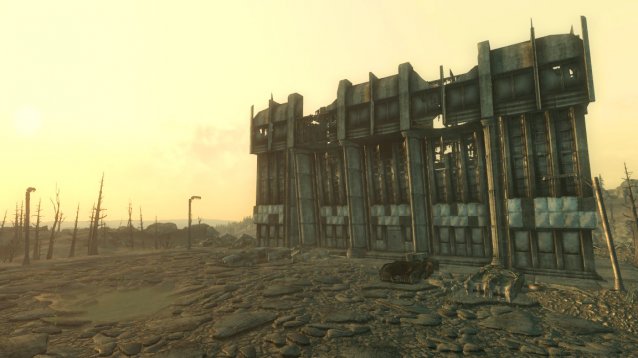
14. So what is the deal with the Dunwich Building out in the Capital Wastelands? The obelisk in the basement seems to hold a strange power, and later in the game, the Lone Wanderer returns a mysterious book called the Krivbeknih to the area in order to destroy it.
What’s going on here? Apparently the location is a reference to HP Lovecraft lore, as is the Krivbeknih, which is likely meant to be the Necronomicon. Jaime, a Ghoul who visits the ruins in hopes of tracking down the book, can be heard chanting “Alhazred”, the author of the Necronomicron, on an audio tape he left behind. The obelisk must have been unearthed by the former owners of the building, Dunwich Borers LLC. They probably abandoned the building once they unearthed the obelisk or shortly after it started causing trouble.
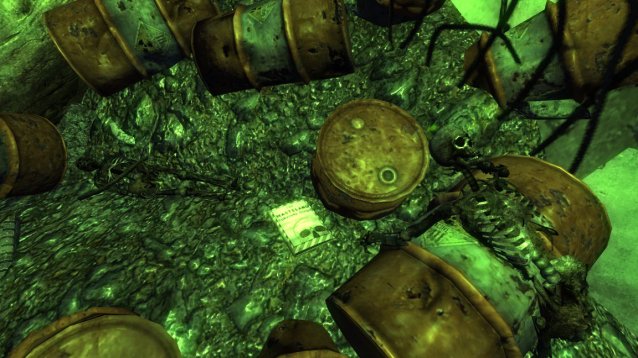
15. People often ask if there any references to Fallout 3 in New Vegas and yes, they do exist. The nuclear waste disposal site Greener Pastures is casually mentioned on a terminal in Dead Money, there are copies of the Wasteland Survival Guide scattered throughout the Mojave, and Museum of Tech and Super Duper Mart posters can be seen (though this may be due to legacy code, the reuse of old assets from a previous game).
The bumper sticker on ED-E references Roosevelt Academy in the Capital Wastelands while a case of Aqua Pura from the Broken Steel DLC sits bewilderingly in the location of Matthews Animal Husbandry Farm. There’s also a picture of Tenpenny Towers in one of the casinos but that too may be legacy code.
There are also some more roundabout references, such as the unique Gatling Laser named Vengeance in Fallout 3, which has a counterpart named Mercy in New Vegas.
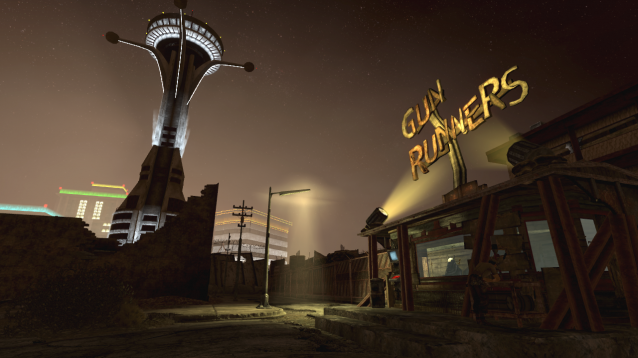
Since Fallout: New Vegas takes place near the location of the first two Fallout games, there are also a lot of references to those as well, but they are almost too numerous to list in full. Most if not all of the factions, from the Vipers to the Gun Runners, are from the original games or were cut from them. In the H&H Tools factory, a computer terminal entry with an email makes mention of Tragic the Garnering, from Fallout 2. In the unmarked quest You Gotta Break A Few Eggs, Jas Wilkins will mention the death of her great aunt’s pet Deathclaw in Modoc, which The Chosen One actually killed.
The location The Wrecked Highwayman is also a reference to Fallout 2. It is meant to be the broken-down version of the Highwayman belonging to The Chosen One (the Highwayman is also referenced in Fallout 3, in the form of a unique tire iron called The Highwayman’s Friend). You can also purchase That Gun, a reference to the .223 pistol in Fallout 1 and 2 (as well as Deckard’s gun in Blade Runner), in the gift shop at Novac. The NCR currency bears the name of the Boneyard. The companion Dog, a first generation Nightkin in the Dead Money DLC, makes mention of wanting to be back at “the Church”, a reference to The Cathedral, home of the Super Mutants under control of the Master.
There are also a number of gangs that were either cut out of the original games or only made sparse, obscure appearances in prior Fallout stories that had a bigger role in New Vegas, including the Great Khans, the Vipers, and the Jackals.
At one point, all the Fallout games were slyly referenced in a computer terminal at the Sunset Sarsaparilla Headquarters in an annual sales report reading:
“Northeast continues to be a tough nut to crack. Things are shaping up in the North and Midwest. As usual, performance in the Southwest is strong.”
The list goes on and on.
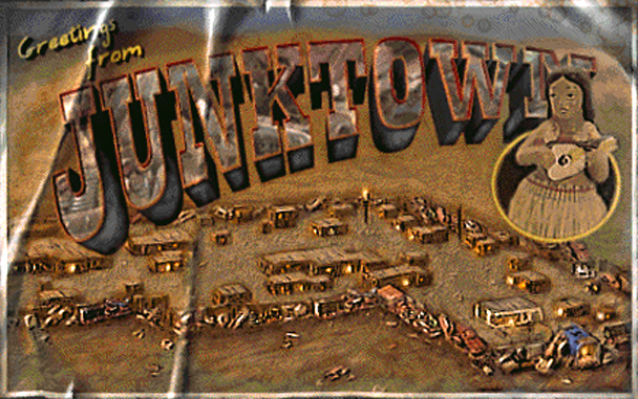
16. Similarly, Fallout 3 contains some references to the original two Fallout games. On the bulletin board of Vault 101, a bingo night advertisement featuring the number 13 promises a “week’s worth of water rations” to the winner. Butch can also be heard asking why anyone would want to be called a “Vault Dweller” while discussing names for his gang. Also, Tales of a Junktown Jerky Vendor, a skill book available in Fallout 3 and New Vegas, is a reference to the town of the same name in the first Fallout game.
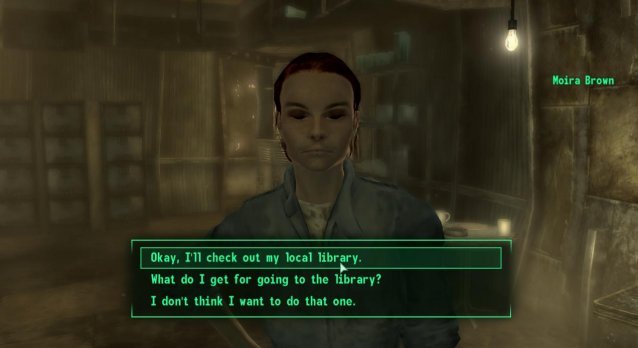
17. After you complete the Wasteland Survival Guide mission for Moira Brown, the player is allowed to sarcastically ask if she’s going to ask them to print and distribute the final product. While she cheerily chirps that you’re a pessimist for even thinking that way, some omitted files indicate that initially, that was exactly the plan the developers had in mind! The guides would have been printed on the presses found at Hubris Comics. The mission was cut from the final version of the game but you can find traces of it all over the Hubris Comics building, including a body stuck in one of the machines.
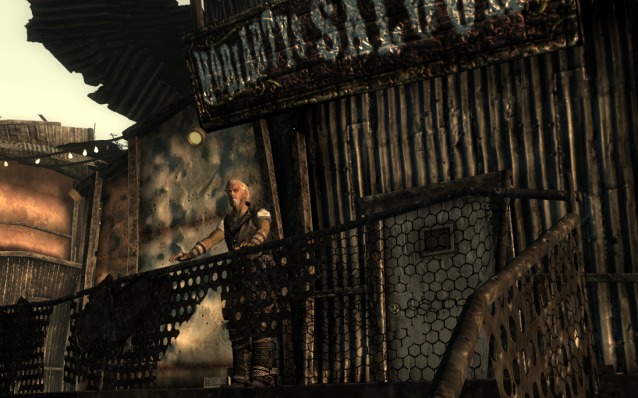
18. In the Fallout 3 Official Game Guide, it is said that Colin Moriarty holds two keys in the cooler at his Saloon, one to a house in Andale, and another to the basement. In the game, he has neither. Was this a genuine error, or was Colin Moriarty originally meant to be part of the cannibal clan residing in Andale?
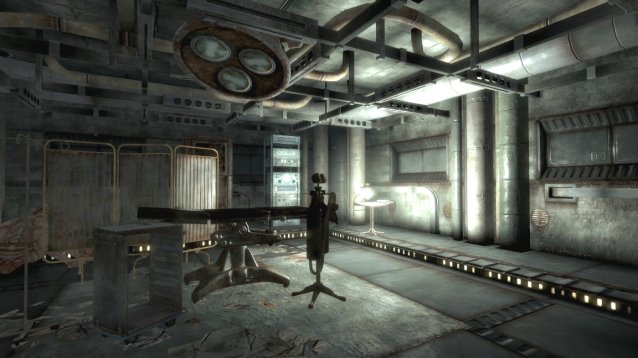
19. In Fallout 3 you can actually visit the room where the Lone Wanderer was born. It can be found on the sub-basement level of the Jefferson Memorial and has a hospital bed, medical equipment, and a gene projector folded up on the ceiling.

20. Four flavors of Nuka Cola exist: Quantum, Clear, Quartz, and Victory; five if you count the Fallout:Tactics variety Cherry. Quantum seems to be a direct reference to Pepsi Blue which, like Nuka Quantum, posed health risks to those who drank it.
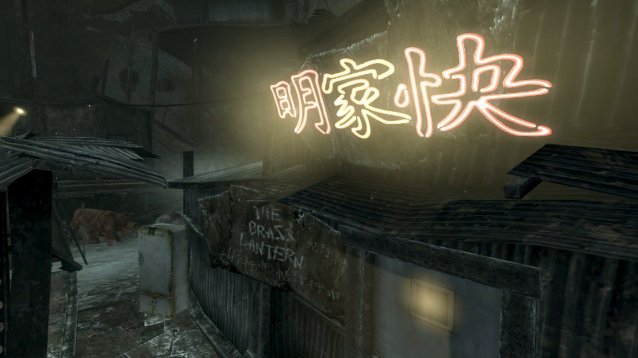
21. Remember that odd, seemingly out of place sign in Chinese that’s displayed at The Brass Lantern in Megaton? It actually means something. Roughly translated it comes out to “Megaton Fast Food”. Now, where the Stahls actually got a neon sign in the Capital Wasteland is anybody’s guess.
Another bit of in-game Chinese? “Yao Guai”. It just means “monster”.
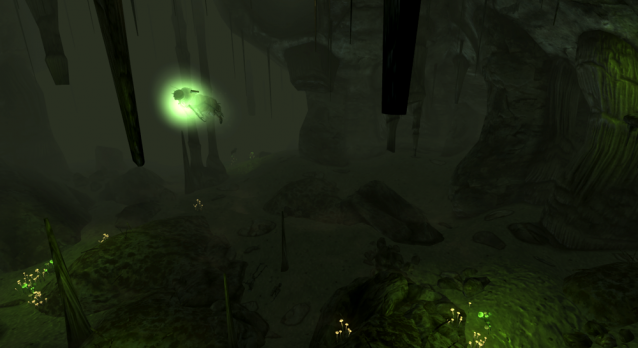
22. One of, if not the, largest and most powerful enemies in all of the Mojave is actually a Legendary Bloatfly. It can be found in the Mysterious Cave in Big MT of the Old World Blues DLC.
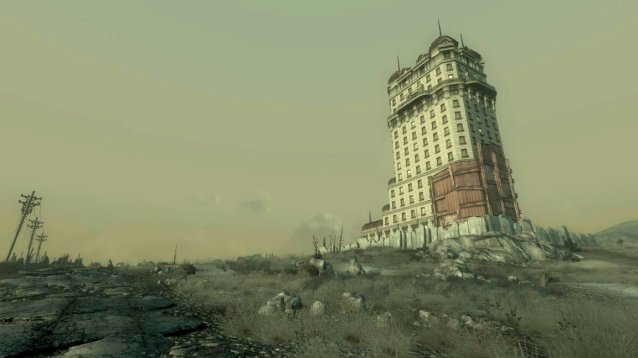
23. Tenpenny Tower was originally supposed to have its own radio station. You can download a mod that adds Allistair Tenpenny’s audio clips back into the game along with 33 bossa nova jazz tracks over at the Nexus Forums.
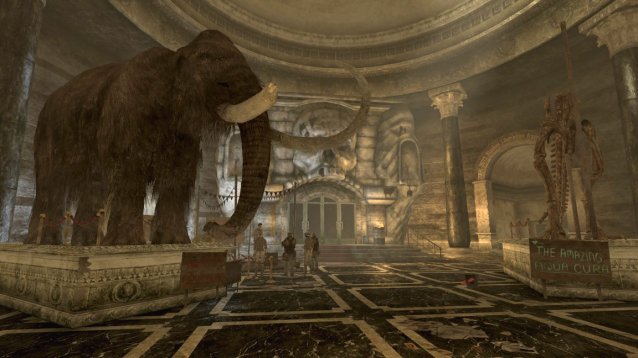
24. Underworld, the city of ghouls stationed in an exhibit of the Museum of History, contains numerous allusions to Hell. The ruined painting on second floor of the Concourse is “Dante and Virgil in Hell” by William-Adolphe Bouguereau.
Related to the painting is the name of Underworld’s bar, The Ninth Circle, a reference to Inferno, a section of the Divine Comedy which describes the travels of Dante and Virgil through the nine circles of Hell. Cerberus, a resident, is named for the three headed guard dog of Hades, and the servant Charon is named after the ferryman of the river Styx. Cerberus, who is the Mister Gutsy unit defending Underworld, will comment that he’d rather send the resident ghouls “to Hell” rather than be their “guard dog”. Meanwhile, the medical staff at The Chop Shop are named Graves and Barrows, both references to death and burial.
There are other areas where non-playable characters are named according to a scheme. In Oasis, everyone has the name of a plant or tree.

25. At an unmarked location west of the Temple of the Union in the Capital Wastelands, you can find The Roach King and his throne, along with six of his docile subjects--Radroaches!

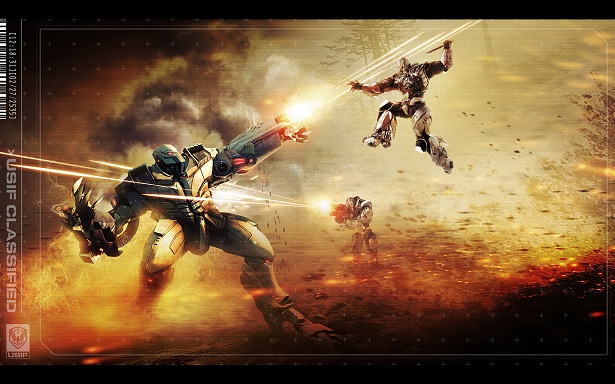
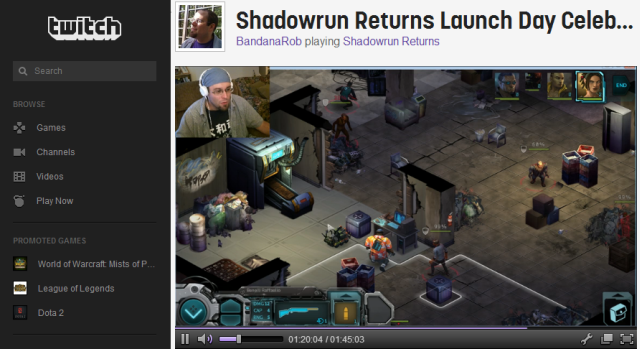

 Clean Up on Cyber Monday with an Extra 25% off E-Learning
Clean Up on Cyber Monday with an Extra 25% off E-Learning How to fix Call of Duty Advanced Warfare PC Black Screen, Crashes, Freezing issues, Low FPS, DLL errors, Texture issues and more
How to fix Call of Duty Advanced Warfare PC Black Screen, Crashes, Freezing issues, Low FPS, DLL errors, Texture issues and more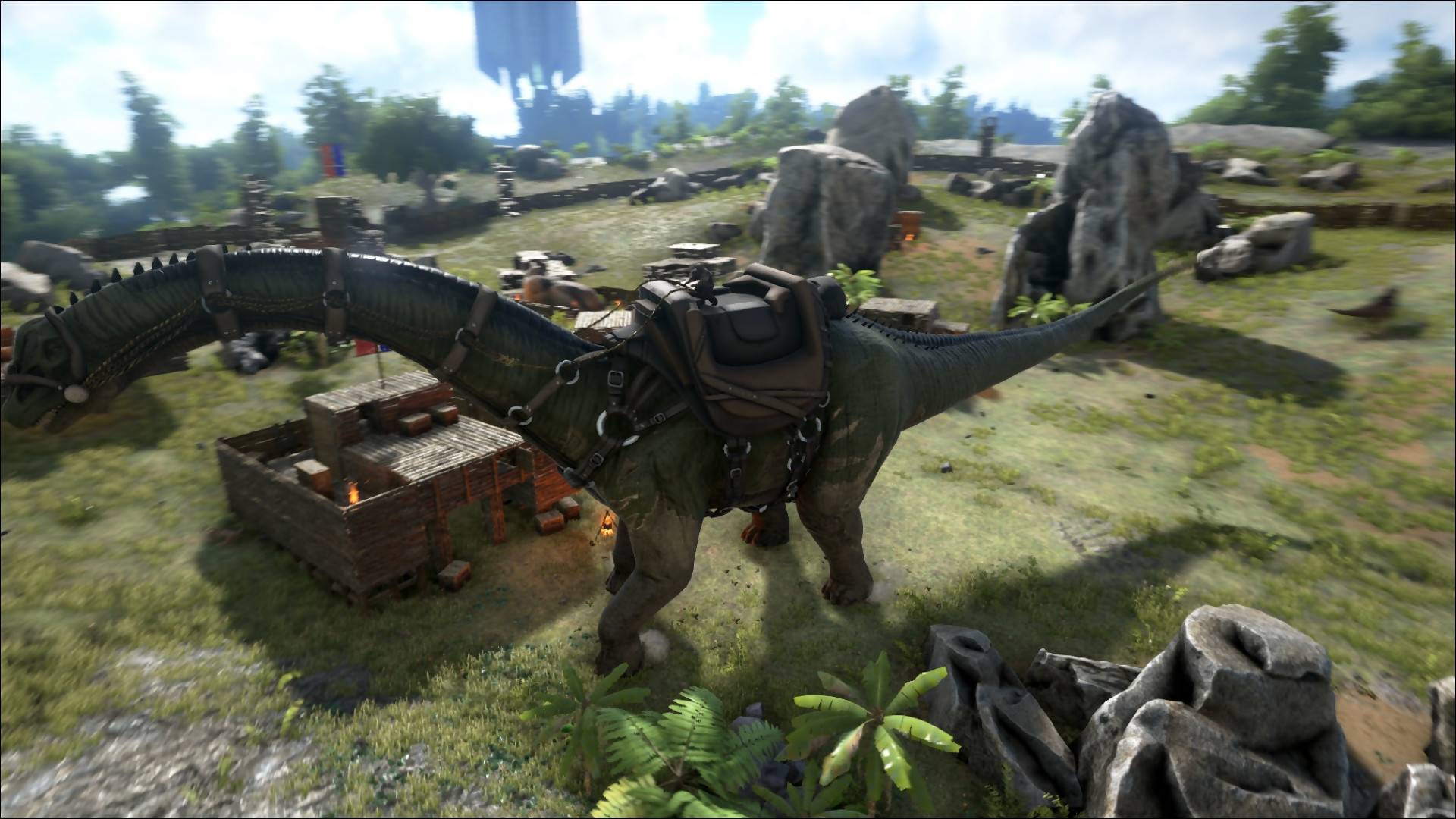 How to Tame a Dinosaur in Ark: Survival Evolved
How to Tame a Dinosaur in Ark: Survival Evolved War Thunder Wiki: Everything you need to know about the game .
War Thunder Wiki: Everything you need to know about the game .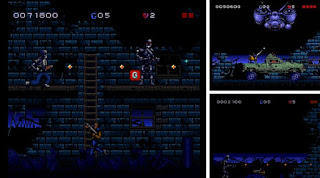 10 most memorable Video Games inspired by Terminator - 2015
10 most memorable Video Games inspired by Terminator - 2015